
The Max Planck Institute for Astrophysics (MPA) is a research institute located in Garching, just north of Munich, Bavaria, Germany. It is one of many scientific research institutes belonging to the Max Planck Society.
The Max Planck Institute for Extraterrestrial Physics is a Max Planck Institute, located in Garching, near Munich, Germany. In 1991 the Max Planck Institute for Physics and Astrophysics split up into the Max Planck Institute for Extraterrestrial Physics, the Max Planck Institute for Physics and the Max Planck Institute for Astrophysics. The Max Planck Institute for Extraterrestrial Physics was founded as sub-institute in 1963. The scientific activities of the institute are mostly devoted to astrophysics with telescopes orbiting in space. A large amount of the resources are spent for studying black holes in the galaxy and in the remote universe.
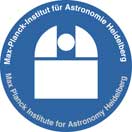
The Max-Planck-Institut für Astronomie is a research institute of the Max Planck Society (MPG). It is located in Heidelberg, Baden-Württemberg, Germany near the top of the Königstuhl, adjacent to the historic Landessternwarte Heidelberg-Königstuhl astronomical observatory. The institute primarily conducts basic research in the natural sciences in the field of astronomy.

The Max Planck Institute for Solar System Research is a research institute in astronomy and astrophysics located in Göttingen, Germany, where it relocated in February 2014 from the nearby village of Lindau. The exploration of the Solar System is the central theme for research done at this institute.
Zoltán Balog is an astronomer with the Max Planck Institute for Astronomy in Heidelberg, Germany. In 2006, while at the Steward Observatory at the University of Arizona, Balog's team was the first to observe the complete process of photoevaporation of a protoplanetary disk.

The Astronomical Calculation Institute is a research institute in Heidelberg, Germany, dating from the 1700s. Beginning in 2005, the ARI became part of the Center for Astronomy at Heidelberg University. Previously, the institute directly belonged to the state of Baden-Württemberg.
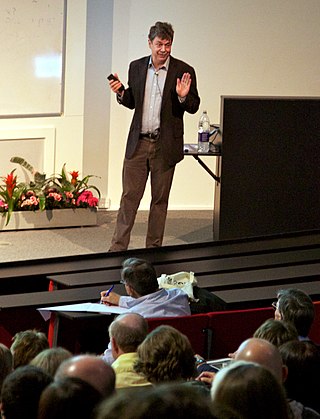
Simon David Manton White, FRS, is a British astrophysicist. He was one of directors at the Max Planck Institute for Astrophysics before his retirement in late 2019.
Matthias Steinmetz is a German astronomer and astrophysicist. He is director of the Astrophysical Institute Potsdam (AIP) and professor at the University of Potsdam.
Daniel Apai is a professor and astrophysicist at The University of Arizona in Tucson, Arizona. He is known for his studies of astrobiology, extrasolar planets, and the formation of planetary systems. He is the principal investigator of the Earths in Other Solar Systems team of NASA's Nexus for Exoplanet System Studies and the Hubble Space Telescope Cloud Atlas Treasury program, and Project EDEN, a large survey for habitable planets in the immediate solar neighborhood. He is leading the Nautilus Space Observatory space telescope concept and co-leading the technology development underpinning it.
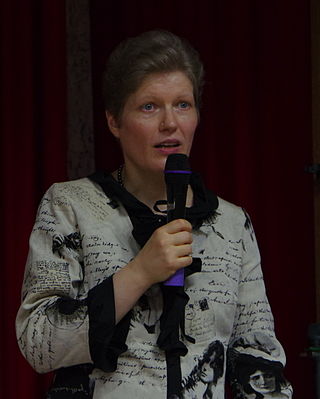
Eva K. Grebel is a German astronomer. Since 2007 she has been co-director of the Astronomisches Rechen-Institut at the University of Heidelberg in Germany. Eva Grebel is an expert in the study of stellar populations and galaxy formation.
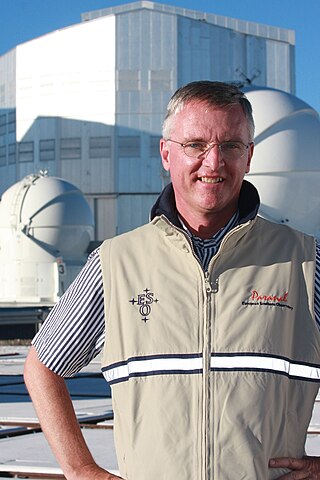
Pieter Timotheus "Tim" de Zeeuw is a Dutch astronomer specializing in the formation, structure and dynamics of galaxies. From 2007 to 2017 he was the director general of European Southern Observatory. He is married to prominent astronomer Ewine van Dishoeck. In May 2022, Leiden University suspended him after an internal review concluded that over several years he repeatedly belittled and insulted women in public and abused his position of power as a professor by threatening to damage their scientific careers; and that in addition to intimidation and inappropriate behavior there was "a component of sexual harassment". The Max Planck Institute for Extraterrestrial Physics announced that they will no longer work with him and the European Southern Observatory banned him from accessing their premises.
Sebastian Florian Hönig is a German astronomer, Professor of Observational & Computational Astrophysics in the astronomy group of the University of Southampton School of Physics & Astronomy, and discoverer of minor planets and comets.
HIP 13044 is a red horizontal-branch star about 2,300 light years from Earth in the constellation Fornax. The star is part of the Helmi stream, a former dwarf galaxy that merged with the Milky Way between six and nine billion years ago. As a result, HIP 13044 circles the galactic center at a highly irregular orbit with respect to the galactic plane. HIP 13044 is slightly less massive than the Sun, but is approximately seven times its size. The star, which is estimated to be at least nine billion years old, has passed the red-giant phase. The relatively fast rotation of the star may be due to having engulfed one or more planets during the red-giant phase.
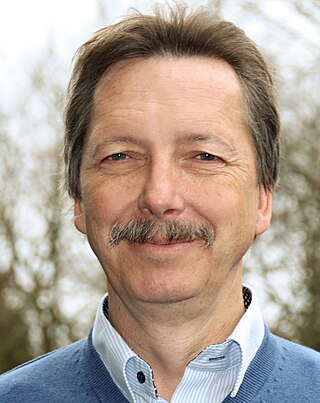
Thomas K. Henning is a German astrophysicist. Since 2001, he is a director at the Max Planck Institute for Astronomy. Henning is an expert in the field of star and planet formation.
Guido Münch Paniagua was a Mexican astronomer and astrophysicist.
Douglas N. C. Lin is Professor of Astronomy and Astrophysics at the University of California, Santa Cruz. He was born in New York and grew up in Beijing. He earned his BSc from McGill University, his PhD from the Institute of Astronomy, Cambridge University, and performed postdoctoral research at both Harvard and Cambridge. In 1979 he took an Assistant Professorship at UCSC, and has remained there since. He is also the founding director of the Kavli Institute for Astronomy and Astrophysics at Peking University.
Felix Hormuth (born 1975) is a German astronomer, working at the Max Planck Institute for Astronomy (MPIA) until 2016, and a prolific discoverer of minor planets. During his stay at the Calar Alto Observatory in Spain, he has discovered many asteroids, including a Jupiter trojan and two near-Earth objects, such as the 15-meter Amor asteroid 2009 DS36, using MPIA's 1.23-meter reflector telescope.

Walter Ernst Fricke was a distinguished German professor of theoretical astronomy at the University of Heidelberg. He was a mathematician and cryptanalyst during World War II at the Wehrmacht signals intelligence agency, Inspectorate 7/VI from 1941 to 1942 (which would later become the General der Nachrichtenaufklärung. In 1942 he was transferred to the OKW/Chi Section IIb. His specialty was the production of codes and ciphers, and the security studies of Army systems. After the war he was director of the Astronomical Calculation Institute in Heidelberg, Germany.
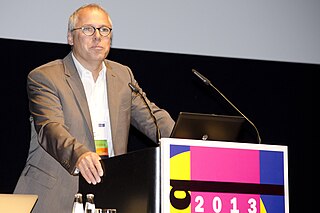
Martin Vingron is an Austrian mathematician working in the fields of bioinformatics and computational biology. Since 2000, he has been Director of the Max Planck Institute for Molecular Genetics.
Michael Perryman is a British astronomer, known for his work leading the Hipparcos and Gaia space astrometric projects.










